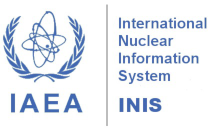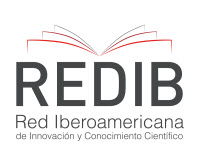Determination of temporal correction factors for a survey meter detector dedicated to radioprotection in radiology
DOI:
https://doi.org/10.15392/2319-0612.2025.2905Palabras clave:
Radiation detector, ionization chamber, radiation protectionResumen
Radiometric surveying is essential for assessing radiation levels in facilities that use ionizing radiation, ensuring that individual exposures remain within the dose limits established by current regulations. Ionization chambers (ICs) are crucial tools in this evaluation, and understanding their operational limitations—particularly the effects of temporal dependence—is key to ensuring accurate measurements. This study aimed to verify the temporal dependence of the Fluke Victoreen IC (349 cm³, model 451B-RYR) by analyzing the ambient dose equivalent rate H*(10) over short exposure intervals in its two operational modes: Integrated (Mode A) and Rate (Mode B). Measurements were conducted using N60, N80, and N100 radiation qualities for narrow X-ray beams defined by ISO 4037-1:2019 and characterized at the Laboratory of Radiological Sciences (LCR). The results revealed temporal dependence for times shorter than 0.8 s for N60 and N80, and shorter than 1.5 s for N100 in both operational modes. Correction factors were calculated to adjust the H*(10) values, reducing uncertainties and enabling the definition of cutoff times for each radiometric quality and chamber mode. Mode A exhibited shorter cutoff times for N60 and N100 (0.3 s and 0.4 s, respectively), whereas Mode B proved more suitable for N80 (0.2 s). The highest combined relative uncertainties before stabilization were observed as follows: for N60, 26% in Mode A and 50% in Mode B (both at 0.1 s); for N80, 31% in Mode A and 17% in Mode B (both at 0.5 s); and for N100, 49% in Mode A (0.2 s) and 15% in Mode B (0.6 s). The study concludes that the application of correction factors and cutoff times improves the precision of H*(10) measurements at short exposure intervals, contributing to more reliable radiometric surveys in radiological protection contexts.
Descargas
Referencias
[1] ANVISA (Agência Nacional de Vigilância Sanitária). In: RESOLUÇÃO DA DIRETORIA COLEGIADA - RDC No 611, DE 9 DE MARÇO DE 2022. Brasil. 2022.
[2] CNEN (Comissão Nacional de Energia Nuclear). In: Instalações Autorizadas. CNEN. Available at: <https://appasp2019.cnen.gov.br/seguranca/cons-ent-prof/entidades-aut-cert.asp>. Accessed on 31 Oct. 2024.
[3] CNEN (Comissão Nacional de Energia Nuclear). In: Requisitos básicos de Radioproteção e segurança radiológica de fontes de radiação. CNEN. Rio de Janeiro, Brasil. 2024.
[4] ISO 4037-1: 2019. In: Radiological protection - X and gamma reference radiation for calibrating dosemeters and doserate meters and for determining their response as a function of photon energy Part 1: Radiation characteristics and production methods. Vernier, Switzerland. 2019.
[5] PACÍFICO, L. C. In: Caracterização das qualidades de radioproteção N10 a N150 no laboratório de metrologia do Departamento de Ciências Radiológicas LABMETRO/DCR/IBRAG/UERJ. UERJ. Rio de Janeiro, Brazil. 2020.
[6] ASSIS, B. S.; PACÍFICO, L. C.; PEIXOTO, J. G. P.; MAGALHÃES, L. A. G. In: Comparação da dependência temporal entre três detectores na qualidade de radiação N-60 da norma ISO 4037-1. Revista Brasileira de Física Médica, [S. l.], v. 18, p. 752, 2024. DOI: 10.29384/rbfm.2024.v18.19849001752. Available at: https://rbfm.org.br/rbfm/article/view/752. Accessed on: 13 Nov. 2024. DOI: https://doi.org/10.29384/rbfm.2024.v18.19849001752
[7] FLUKE BIOMEDICAL. In: Manual de operação: Ion Chamber Survey Meter 451B. Available at: https://www.flukebiomedical.com/sites/default/files/resources/451b_omeng0100.pdf. Accessed on: 25 Sep. 2024.
Descargas
Publicado
Número
Sección
Categorías
Licencia
Derechos de autor 2025 Ellen Vilarinho da Silva, Vitoria de Lima Ribeiro Baptista, Leonardo de Castro Pacífico, Luis Alexandre Gonçalves Magalhães

Esta obra está bajo una licencia internacional Creative Commons Atribución 4.0.
Licencia: los artículos de BJRS tienen una licencia internacional Creative Commons Attribution 4.0, que permite el uso, el intercambio, la adaptación, la distribución y la reproducción en cualquier medio o formato, siempre que se otorgue el crédito correspondiente al autor o autores originales y a la fuente, proporcione un enlace a la licencia Creative Commons e indique si se realizaron cambios. Las imágenes u otros materiales de terceros en el artículo están incluidos en la licencia Creative Commons del artículo, a menos que se indique lo contrario en una línea de crédito al material. Si el material no está incluido en la licencia Creative Commons del artículo y su uso previsto no está permitido por la regulación legal o excede el uso permitido, el autor deberá obtener el permiso directamente del titular de los derechos de autor. Para ver una copia de esta licencia, visite http://creativecommons.org/licenses/by/4.0/






















